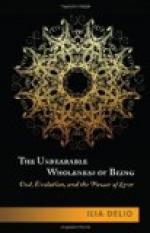The new poetry and the ideal of chivalry and the service of woman were the first independent developments able to hold their own by the side of ecclesiastical culture. The rigid Latin was superseded; the soul of man sang in its own language of the return of spring, the beauty of woman, knighthood and adventure. Poetry became the most important source of secular education, and as each nation sang in its own tongue, national characteristics shone out through the individuality of the singer. Provencals, Frenchmen, Germans and Italians realised that they belonged to different races. This was particularly the case during the Crusades when, under the auspices of the Church, the nations of Europe had apparently undertaken a common task.
In Provence, in France and Germany, every poem was set to music, and thus, simultaneously with the lyrical art, secular music was evolved. J.B. Beck, the greatest authority on the music of the troubadours,—the music of the minnesingers has been studied very little,—says, “The poetry of the troubadours and trouveres represents in its totality a collection of songs which in their frequently amazing naivete and melodiousness, their spontaneity and sound music, intimate congruity of melody and text and extraordinary originality, have been unparalleled to this day.” All these songs are distinguished by graceful simplicity; but the ear of the non-musician can hardly perceive the originality on which Beck lays such stress. In any case, the music is inferior to the frequently perfect text. This same period saw the inception of our present system of musical notation.
The new poetry created a desire for “literature,” thus giving impetus to the already existent art of illuminated manuscripts. Every prince kept a salaried army of copyists and illuminators, producing the manuscripts to-day preserved and studied in our museums. Studios where this work was carried on existed at various art centres, especially—as far as we are able to tell to-day—at the papal courts at Avignon—that meeting-ground of French and Italian artists—in Paris and at Rheims. These workshops were the birthplace of miniature painting, which reached perfection in the famous Burgundian “Livres d’Heures.”
To-day the science of aesthetics is attempting to trace the influence which emanated from the French and even from the earlier English workshops, and spread over the whole continent. It is very probable that the French art of miniature painting of the first half of the thirteenth century was mother of the later North-European art of painting. It was in Northern Europe that, independently of Hellenic and Byzantine influence, a new art originated, of which Max Dvorak says: “It would hardly be possible to find an external cause for the quick and complete disappearance of the elements of the Neo-Latin art. The past was simply done with, and an absolutely new period was beginning. Thus the new art was almost without




